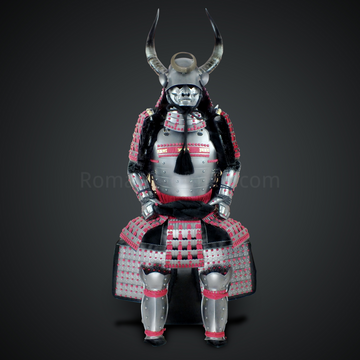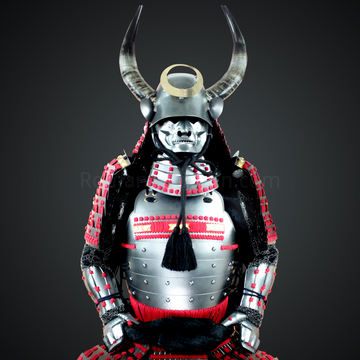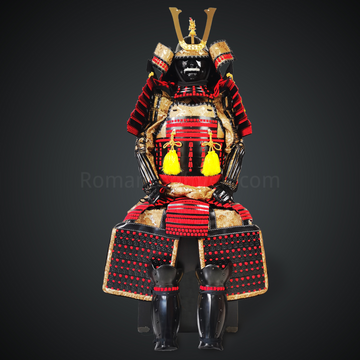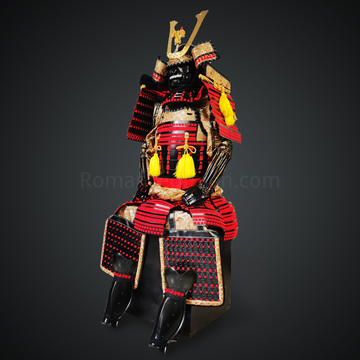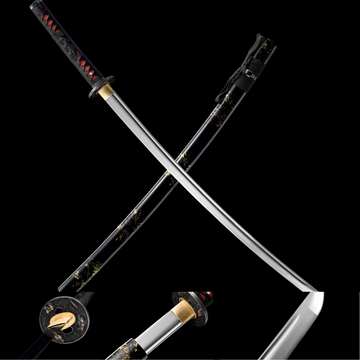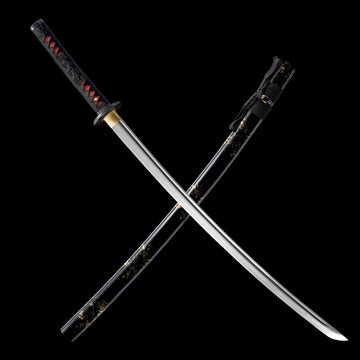Introduction the Samurai armor Do cuirass History and Different Types
What is Do in Samurai armor?

胴 “Do”, is a piece of armor worn to protect the body from the chest to the waist. Do is an essential part of the samurai armor, present in every era and every type of armor. This article introduces how the Do has changed over time and the different types of Do that have been used.
History of Samurai Armor Do
Kofun Period Do
The origin armor believed to have been used in Japan are the “Tankou 短甲” (short armor) and “Keikou 挂甲” (hanging armor). The Tanko has a unique Japanese style, with a thin, hammered iron plate used for the Do. This iron plate was made by fastening it with rivets or leather cords. On the other hand, the Keiko is an armor made based on the Chinese-style armor that was introduced from the Korean Peninsula. The Do is made by connecting small iron plates with thin leather cords, and when worn, it is fastened at the front like a coat. By using small plates, it was more flexible and easier to move than the Tanko, and had excellent mobility.

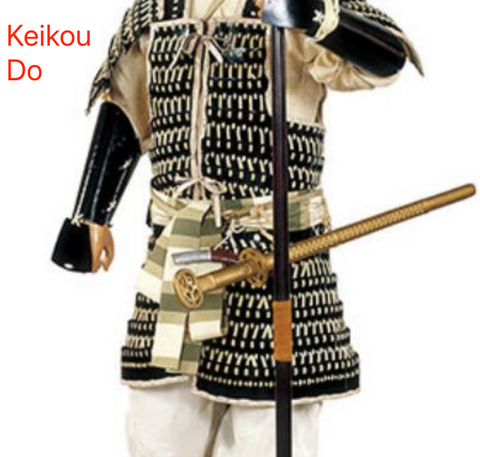
Heian Period Do
In the Heian period, the rise of the samurai class and the “国風文化 Kokufu-bunka" (means national style culture) led to the birth of the first uniquely Japanese Armor, the “Oyoroi” (大鎧 great armor) and “Doumaru” ( 胴丸 round armor).
The Oyoroi was created as armor specialized for horseback archery, which was the main method of battle from the Heian period to the Kamakura period. The Do of the Oyoroi looks like a trapezoid when viewed from the front, and is made so that the front, left side, and back are all one piece. The right side is protected by a board called a “Waidate 脇楯”. In addition, the front of the Do is covered with a “Tsurubashiri no Kawa弦走韋” to prevent it from getting caught when shooting arrows. Over the passage of time, the Oyoroi gradually gained appreciation for its artistic value, leading to a trend to make the armor more luxury and decorative.

The Oyoroi is an armor for high-ranking samurai who ride horses, but for general soldiers who fight on foot, most of them can't afford a full set of Oyoroi, instead, they use armor called Doumaru (胴丸))
The Do of the Doumaru is all one piece, unlike the Oyoroi, and is worn by fastening it on the right side of the body. The Oyoroi gradually declined as the scale of battles expanded, but the Doumaru was widely used for a long time until the Muromachi period.

In the Muromachi period, the shape of the Do of the Doumaru changed to a slightly narrowed waist. By supporting the weight of the Do on the waist as well as the shoulders, this is a better weight distribution.
As the Kamakura period began, more agile and easy-to-move armor was needed, new types of Do such as “Hara-ate” (belly guards 腹当) and “Haramaki” (belly wraps 腹巻) were born.
The Haraate is a piece of armor that protects the chest and abdomen, as the name suggests. It has a simple structure, is light, and has excellent mobility. It has a shape similar to the Do used in Kendo, and does not cover the back.

The Haramaki is a Do that is thought to have evolved from the Haraate, and is characterized by being worn by fastening it at the back. Although it is made to be more agile than the Doumaru, it is more robust than the Haraate, so it was born as an armor for general soldiers who fight on foot. However, as the tactics of war changed, it began to be used by higher-ranking samurai as well, and the equipment and color of the Odoshige (armor cords) increased, becoming a luxurious Do.

Sengoku period Do
During the Sengoku period, due to the intensification of group warfare and the introduction of firearms, there was a demand for armor that could be easily produced, yet was robust and had excellent mobility. In response to this, the “Tosei Gusoku” (当世具足 modern armor) was born in the late Muromachi period.
Tosei Gusoku literally means modern armor, and refers to a set of armor that includes everything from the helmet to the shin guards. The torso of the Tosei Gusoku simplified the manufacturing process by enlarging the traditional small plates (小札 Kozane) or using large iron plates. Some said Tosei Gusoku is a development based on the Doumaru, there is no fixed style for the Do of the Tosei Gusoku, there are various types exist.
The Sengoku daimyo customized the materials, manufacturing methods, and shapes to their own liking. Tosei Gusoku, unlike the Oyoroi and Domaru, did not differentiate armor by rank, and also served as a kind of uniform for groups, as represented by the “Ii’s Red Armor” 井伊の赤備え.

Major Types of Do used in Tosei Gusoku
The “Okegawa Do” (barrel-side Do), also known as the “Yokohagi Do横矧胴” (horizontal hinged Do) or “Tatehagi Do” (縦矧胴 vertical hinged torso), is a Do made by riveting iron or leather plates. Whether it is riveted horizontally or vertically determines whether it is a Yokohagi Do or a Tatehagi Do. It looks like the side of a barrel and is the most common type of Do in Tosei Gusoku.

Mogami do is a type of do that evolved from the “Mogami Doumaru最上胴丸” which was produced in the Mogami region 最上地方(currently Yamagata Prefecture山形県 ). It is a “Go Mai Dou” (五枚胴 five-plate torso) that is decorated with “Sugake Odoshi” (素懸縅simple lacing) or “Kebiki Odoshi” (毛引縅dense lacing) on a long horizontal plate. The Go Mai Dou is a do made by connecting five plates, one each on the front, back, and left, and two on the right, with hinges.

The “Yukinoshita Dou” is named after the armorers who lived in Yukinoshita, Kamakura, where it was produced. It is also known as the “Sendai Dou仙台胴” because the Sengoku warlord “Date Masamune伊達政宗”, who founded the Sendai domain, liked its finish and brought it to Sendai. It is a five-plate do made by connecting five iron plates with hinges, and while it was robust, it was quite heavy.

The “Hotoke Dou” (Buddha do) is a do that is smooth like a Buddha statue and does not show any seams on the surface. There are two types: one made from two iron plates on the front and back, and one made by filling in the seams of the Okegawa Dou and applying lacquer on top. In addition, the Hotoke Dou is often decorated with embossing. There are types such as the “Nio Dou” (仁王胴 Nio do), which is embossed to resemble the human body with ribs, breasts, and a navel, the “Hotei Dou” (布袋胴 Hotei do), which has a bulging lower abdomen, and the “Hatome Dou” (鳩胸胴 pigeon chest do), which has a bulging chest.

南蛮胴 Nanban Dou
The “Nanban Dou” is a do that was used in Tosei Gusoku, made by repurposing the Western armor cuirass that was imported through the Nanban trade, which was active during the Sengoku period. It is made by hammering out iron plates and connecting the front and back torso with hinges, forming a two-plate do.
The characteristic of the Nanban Dou is that it has a ridge running vertically across the front torso and the lower end is pointed, which withstood attacks from firearms. Due to its novelty, it was favored by Sengoku warlords, and in Japan, “Wasei Nanban Dou” (和製南蛮胴 Japanese-made Nanban do), which imitates the Nanban Dou, was also produced. The Wasei Nanban Dou, unlike the genuine Nanban Dou, is characterized by a flat lower end instead of a pointed one.

